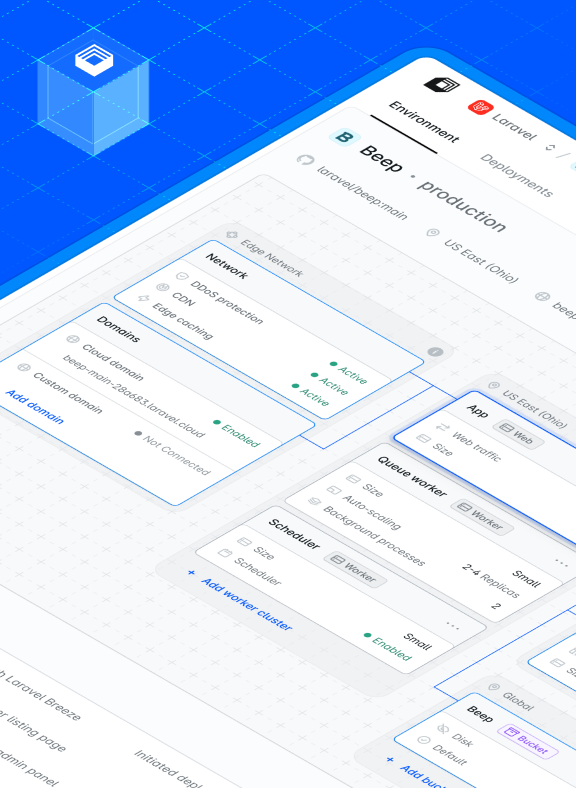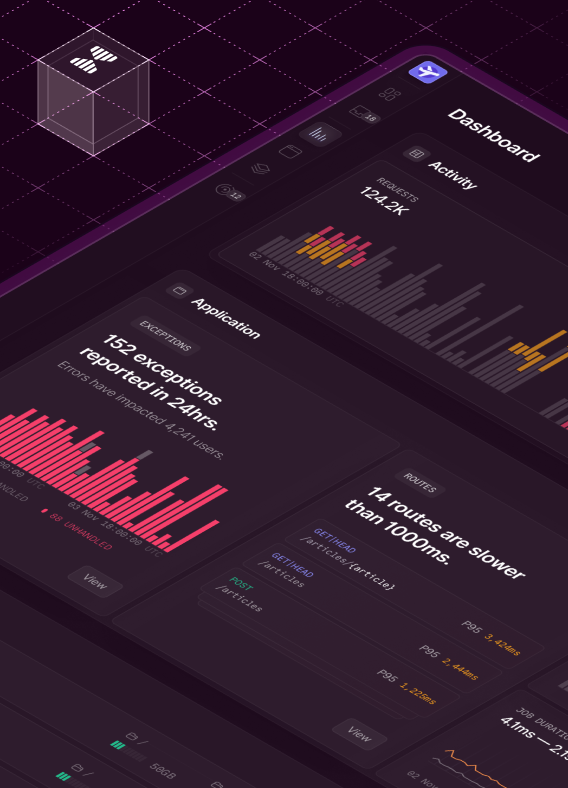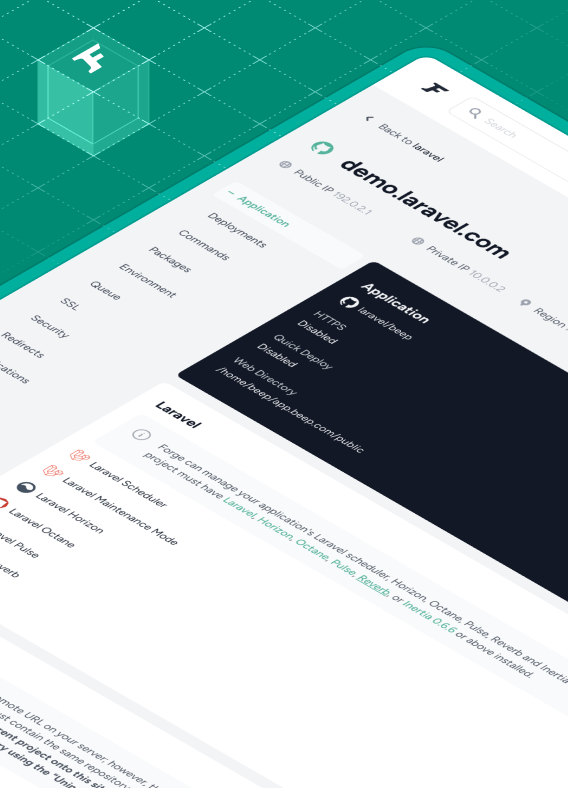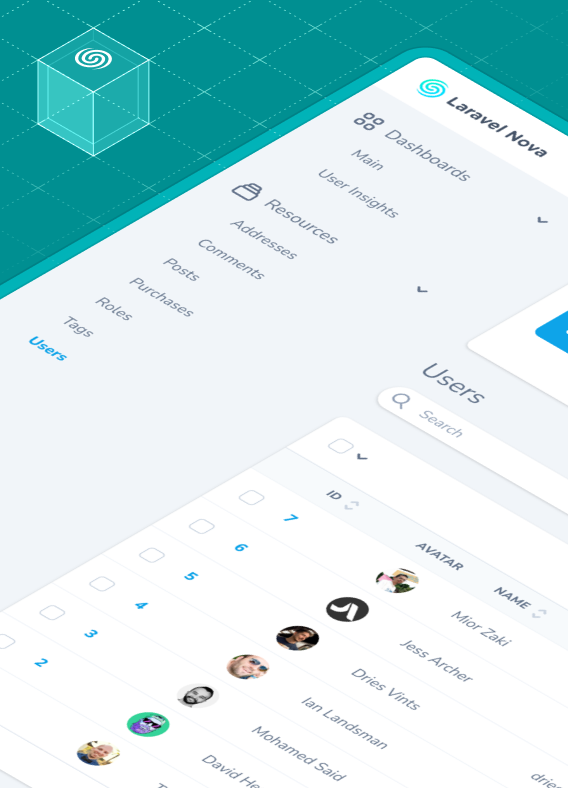It’s one thing to scale a website. It’s another to scale a platform powering hundreds of them, with zero downtime, ever-changing codebases, and unpredictable bursts of demand. That’s the challenge CMS Max faced when their Laravel-based website builder started growing faster than their AWS infrastructure could handle.
CMS Max is building the next big thing in website platforms: a blend of Shopify and WordPress, designed from the ground up for optimal SEO and developer flexibility, enabling any DIYer or developer to easily create a website. With more than 500 sites already live on Laravel Cloud and hundreds more onboarding, the scale is real.
Getting there, however, meant rethinking infrastructure entirely.
 When Customer Demand Outgrows Architecture
When Customer Demand Outgrows Architecture
Before moving to Laravel Cloud, CMS Max ran on AWS. But as customer growth exploded, so did operational pain.
They were scaling too fast, causing AWS to crash frequently. CMS Max’s initial infrastructure wasn’t built to support the pace of new customer onboarding. Nights were spent responding to outages, fielding questions from hundreds of users, and trying to patch a fragile system. That wasn’t sustainable, especially for a platform meant to give other businesses peace of mind.
“I’ve spent years of my life worrying about server crashes: scrambling to fix issues, while hundreds of customers reached out because their websites were down. It was stressful, unsustainable, and distracting us from what really mattered: building great websites,” said Sam Pizzo, CMS Max’s CEO.
Managing their own servers also meant dealing with constant operating systems, PHP, and MySQL updates, fending off DDoS attacks, configuring web application firewall (WAF) rules, and filtering spam bot traffic. The CMS Max team spent more time fighting fires than building a product.
Laravel Cloud changed that equation.
“Laravel Cloud gave us the stability, scalability, and peace of mind we desperately needed. I truly believe Laravel saved both my company and my sanity.” Sam Pizzo, CEO at CMS Max
What CMS Max Is Building on Laravel
The team is currently developing two major platforms using Laravel Cloud. The first is CMS Max itself, a next-generation website builder that combines the flexibility of WordPress with the simplicity of Shopify. It's designed for both developers and DIY users to create fast, secure, and highly visible, SEO-optimized websites.
The second is Nexus Connector, an integration layer that connects point-of-sale (POS) systems directly to CMS Max. This layer enables businesses to sync their in-store inventory and manage online sales without additional overhead.
By combining these tools, CMS Max aims to redefine how businesses approach digital presence and e-commerce.
Why Laravel Cloud
Switching to Laravel Cloud solved CMS Max’s scaling challenges by eliminating the need for infrastructure management altogether.
Zero-downtime deployments and instant provisioning let CMS Max push updates across hundreds of sites without manual intervention. Built-in scaling eliminates the need for traffic prediction or hardware provisioning. Laravel Cloud's security stack includes DDoS protection, SOC 2 readiness, and automated SSL, which is essential for CMS Max's work with government and financial organizations.
By offloading infrastructure, the CMS Max team can focus entirely on product development and client success.
How They Built It
Since transitioning to Laravel Cloud, CMS Max streamlined its development workflow and stays current with the latest technologies, including Laravel 12, Tailwind 4, Inertia 2, Livewire 3, and Filament 4.
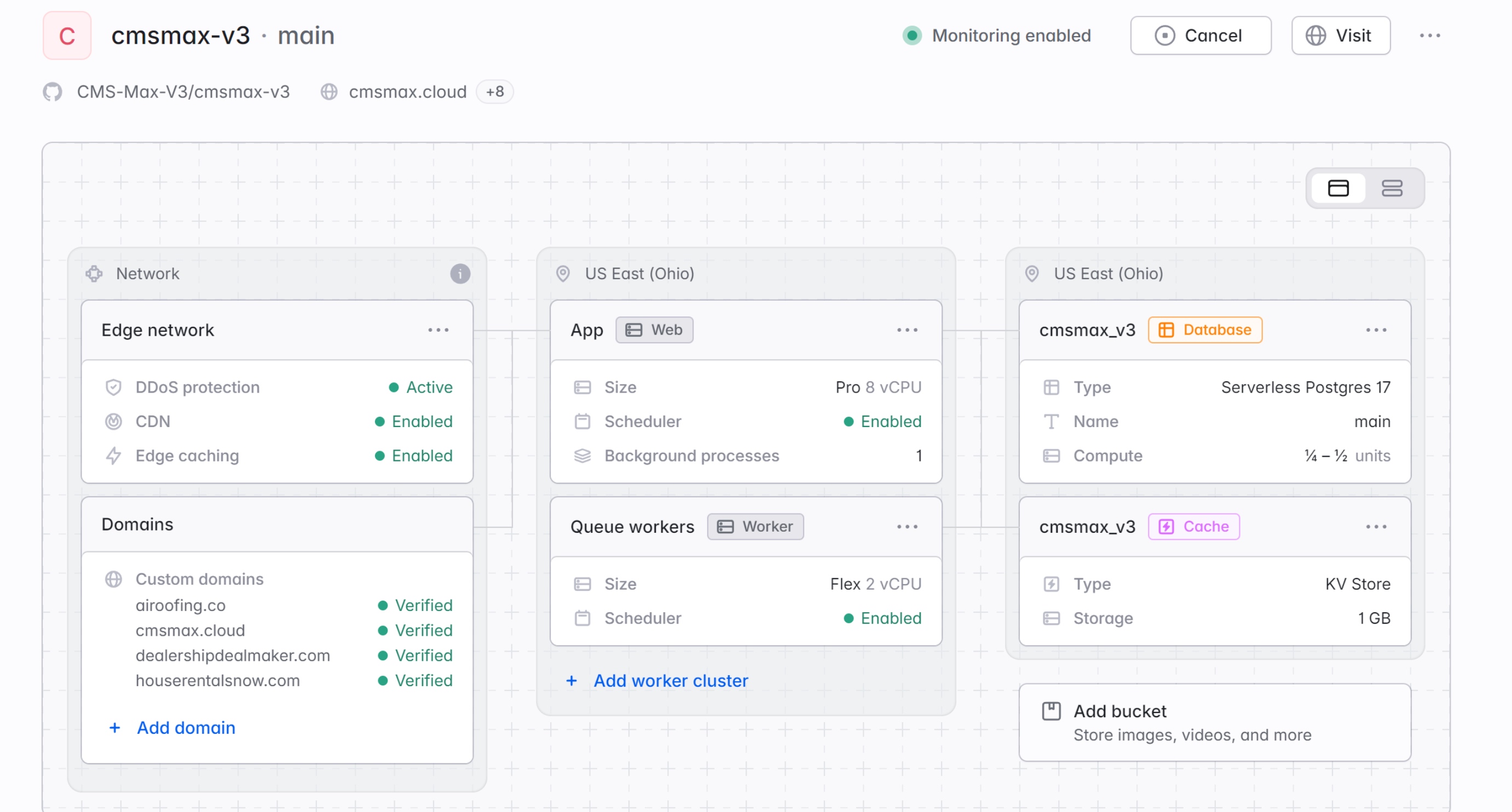 “We use Pest for writing automated tests, ensuring stability and confidence in every deployment, and Nightwatch to proactively detect bugs and optimize performance across the stack. This combination has led to fewer production issues, faster release cycles, and a dramatically improved user experience,” said CMS Max’s CEO.
“We use Pest for writing automated tests, ensuring stability and confidence in every deployment, and Nightwatch to proactively detect bugs and optimize performance across the stack. This combination has led to fewer production issues, faster release cycles, and a dramatically improved user experience,” said CMS Max’s CEO.
A Framework That Grows With You
CMS Max is not a static platform. The team continuously updates its codebase and ships regularly, following a roadmap that’s focused on flexibility and SEO performance, and uses the Laravel ecosystem to iterate quickly and scale with confidence.
“These efficiencies have directly impacted our business: we’re onboarding new clients faster, pushing updates more frequently, and maintaining the level of reliability and security that’s critical for our government and financial clients. Laravel Cloud has empowered us to scale confidently without sacrificing quality or compliance,” explains the CEO.
With more than 500 websites already live and Nexus Connector in active development, CMS Max is moving toward a much bigger goal: to become the largest Laravel project in the world.
“Laravel Cloud has saved us thousands of dollars per month and eliminates the need for a dedicated engineer to monitor our server.” Sam Pizzo, CEO at CMS Max
Infrastructure That Just Works
For CMS Max, Laravel Cloud was more than a performance upgrade; it was an operational turning point that provided much-needed peace of mind to both the team and their customers.
If you're maintaining hundreds of live applications or onboarding clients at scale, try Laravel Cloud.


